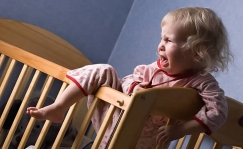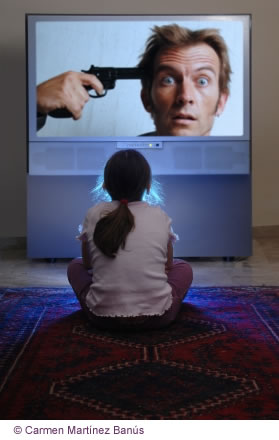
Toddlers who take a long time to fall asleep or wake up many times during the night have put many a desperate mom and dad to the test. Tired parents are often told that night waking is part of toddlerhood, and that it will soon pass on its own, but this is not the case for everyone.
Researchers at NTNU’s Department of Psychology have conducted a comprehensive survey of nearly 1,000 toddlers that shows that serious sleep disorders in young children can have long-term consequences.
The study shows that four-year-olds with sleep disorders have a higher risk of developing symptoms of psychiatric problems as six-year-olds, compared with children who sleep soundly.
At the same time, four-year-olds with psychiatric symptoms have a greater risk of developing a sleep disorder as six-year-olds, compared with children who do not have these kind of symptoms.
Reciprocal relationship
“It is common for children to have periods when they sleep poorly, but for some children, the problems are so extensive that they constitute a sleep disorder. Our research shows that it is important to identify children with sleep disorders, so that remedial measures can be taken. Sleeping badly or too little affects a child’s day-to-day functioning, but we are seeing that there are also long term repercussions,” says Silje Steinsbekk, an Associate Professor and Psychologist in NTNU’s Department of Psychology.
Her previous research on the relationship between sleep disorders and psychological problems in children has shown that four-year-olds with sleep disorders often also show symptoms of psychiatric problems.
The new study, which was recently published in the respected Journal of Developmental & Behavioral Pediatrics, shows that the correlation between sleep disorders and psychiatric disorders is also found over time and that the relationship is reciprocal.
Thorough interviews and diagnoses
We know that 20-40 per cent of young children struggle with sleep in one way or another, but we lack data on how many of them are suffering from a diagnosable sleep disorder.
NTNU researchers conducted diagnostic interviews with the parents of the children participating in the study. The interview was based on the DSM-IV diagnostic manual, which contains the official diagnostic criteria for mental disorders.
One thousand four-year-olds participated in the study. Parents of around 800 of these children were interviewed again two years later. The comprehensive study is part of a longitudinal study in Trondheim that examines the incidence, progression and risk factors for the development of mental health problems in children. The project conducts follow-up visits with the children and their parents every other year.
“Previous studies of sleep problems in children have mainly used a questionnaire format, with questions like, “Does your child have trouble sleeping?” But what parents define as sleep problems will vary. In the diagnostic interview we ask parents questions until we are confident that we have enough information to assess whether a symptom is present or not. The information we’ve collected is more reliable than information obtained from the questionnaire,” says Steinsbekk.
What comes first?
Can we say that poor sleep causes psychiatric problems – or do psychiatric problems cause poor sleep? The findings from the study suggest that the relationship goes both ways.
One possible explanation for this reciprocity may be that both conditions are biologically determined, by common underlying genetics, for example.
Another explanation may be that insufficient sleep creates general functional impairment, and that the risk of other problems therefore increases – in the same way that psychiatric symptoms often result in poorer everyday functioning, which in turn may negatively affect sleep.
Vicious cycle
Perhaps sleep disorders and mental health issues share the same risk factors. A child who shows signs of anxiety or a behavioural disorder may easily end up in a vicious cycle, where conflict with adults triggers anxiety and in turn leads to trouble falling asleep.
It may also be that difficult and negative thoughts steal both energy and sleep and make us restless and depressed if we fail to gain control over them.
“Given that so many children suffer from insomnia, and only just over half ‘outgrow it,’ it is critical for us to be able to provide thorough identification and good treatment. Perhaps early treatment of mental health problems can also prevent the development of sleep disorders, since psychiatric symptoms increase the risk of developing insomnia,” says Steinsbekk, stressing that this is something that must be examined in further research.
Insomnia is most prevalent
The study shows that insomnia is the most prevalent sleep disorder. Children who suffer from insomnia struggle with falling asleep and frequent waking. Insomnia was diagnosed in 16.6 per cent of the four-year-olds surveyed, and 43 per cent of these still had insomnia as six- year olds.
Insomnia in four-year olds increases the risk for symptoms of anxiety, depression, ADHD and behavioural problems as six-year-olds. After the researchers had taken into account the children’s psychiatric symptoms at age four, the relationship between insomnia and ADHD disappeared.
Similarly, children who show symptoms of anxiety, depression, ADHD and behavioural disturbances as four-year-olds have a greater risk of developing insomnia as six-year-olds. When symptoms of insomnia at age four were adjusted for, the relationship between insomnia and anxiety disappeared.
Examples of other types of sleep disorders are hypersomnia, i.e. an extreme urge to sleep, and various cases of parasomnia, such as nightmares, night terrors and sleepwalking. These conditions are uncommon, and the study also shows that, with the exception of sleepwalking, they are shorter-lived.
http://gemini.no/en/2015/04/childrens-sleep-and-mental-health-are-interrelated/
Silje Steinsbekk and Lars Wichstrøm (2015) Stability of Sleep Disorders From Preschool to First grade and Their Bidirectional Relationship With Psychiatric Symptoms. Journal of Developmental & Behavioral Pediatrics: May 2015 – Volume 36 – Issue 4 – p 243–251 doi: 10.1097/DBP.0000000000000134



